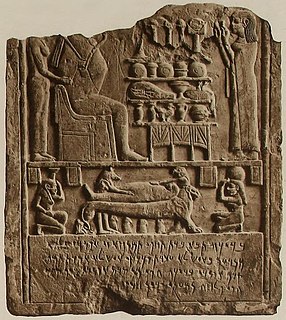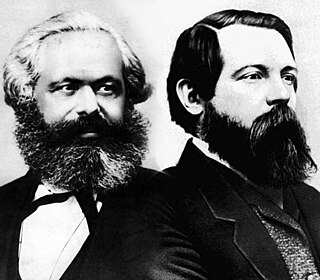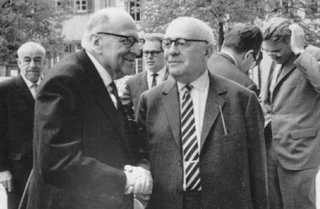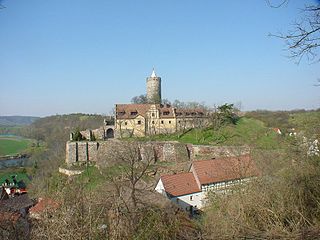 W
WAcculturation is a process of social, psychological, and cultural change that stems from the balancing of two cultures while adapting to the prevailing culture of the society. Acculturation is a process in which an individual adopts, acquires and adjusts to a new cultural environment as a result of being placed into a new culture, or when another culture is brought to you. Individuals of a differing culture try to incorporate themselves into the new more prevalent culture by participating in aspects of the more prevalent culture, such as their traditions, but still hold onto their original cultural values and traditions. The effects of acculturation can be seen at multiple levels in both the devotee of the prevailing culture and those who are assimilating into the culture.
 W
WAramaic studies are scientific studies of the Aramaic language and cultural history of Arameans. As a specific field within Semitic studies, Aramaic studies are closely related to similar disciplines, like Hebraic studies and Arabic studies.
 W
WThe Budapest School was a school of thought, originally of Marxist humanism, but later of post-Marxism and dissident liberalism that emerged in Hungary in the early 1960s, belonging to so-called Hungarian New Left. Its members were students or colleagues of Georg Lukács. The school was originally oriented towards developing Lukacs' later works on social ontology and aesthetics, but quickly began to challenge the paradigm of Lukacsian-Marxism, thus reconstructing contemporary critical theory. Most of the members later came to abandon Marxism. The school also critiqued the "dictatorship over needs" of the Soviet states. Most of the members were forced into exile by the pro-Soviet Hungarian government.
 W
WAnimals that are held by humans and prevented from escaping are said to be in captivity. The term is usually applied to wild animals that are held in confinement, but may also be used generally to describe the keeping of domesticated animals such as livestock or pets. This may include, for example, animals in farms, private homes, zoos and laboratories. Animal captivity may be categorized according to the particular motives, objectives and conditions of the confinement.
 W
WSuzanne Césaire, born in Martinique, an overseas department of France, was a French writer, teacher, scholar, anti-colonial and feminist activist, and Surrealist. Her husband was the poet and politician Aimé Césaire.
 W
WCoptology is the science of Coptic studies, the study of Coptic language and literature.
 W
WA cultural system is the interaction of different elements in culture. While a cultural system is very different from a social system, sometimes both systems together are referred to as the sociocultural system.
 W
WCulture of fear is the concept that people may incite fear in the general public to achieve political or workplace goals through emotional bias; it was developed as a sociological framework by Frank Furedi and has been more recently popularized by the American sociologist Barry Glassner.
 W
WThe Dahomey Amazons were a Fon all-female military regiment of the Kingdom of Dahomey which existed until 1904. They were so named by Western observers and historians due to their similarity to the mythical Amazons of ancient Anatolia and the Black Sea. This unusual emergence of an all-female military regiment was the result of Dahomey's male population facing high casualties in frequent warfare with neighboring West African states, as well as Dahomey being forced to annually give male slaves to the Oyo Empire. The lack of men likely led the kings of Dahomey to recruit women into the army.
 W
WEnculturation is the process by which people learn the dynamics of their surrounding culture and acquire values and norms appropriate or necessary to that culture and its worldviews. As part of this process, the influences that limit, direct, or shape the individual include parents, other adults, and peers. If successful, enculturation results in competence in the language, values, and rituals of the culture.
 W
WMikhail Naumovich Epstein is a Russian-American literary scholar and essayist who is Samuel Candler Dobbs Professor of Cultural Theory and Russian Literature at Emory University, Atlanta, US. He moved there from Moscow, USSR, in 1990. He has also worked as a Professor of Russian and Cultural Theory at Durham University, UK, from 2012 to 2015, where he was the founder and Director of the Centre for Humanities Innovation at Durham University.
 W
WEthnocinema, from Jean Rouch’s cine-ethnography and ethno-fictions, is an emerging practice of intercultural filmmaking being defined and extended by Melbourne, Australia-based writer and arts educator, Anne Harris, and others. Originally derived from the discipline of anthropology, ethnocinema is one form of ethnographic filmmaking that prioritises mutuality, collaboration and social change. The practice's ethos claims that the role of anthropologists, and other cultural, media and educational researchers, must adapt to changing communities, transnational identities and new notions of representation for the 21st century.
 W
WFace-Negotiation Theory is a theory conceived by Stella Ting-Toomey in 1985, to understand how people from different cultures manage rapport and disagreements. The theory posited "face", or self-image when communicating with others, as a universal phenomenon that pervades across cultures. In conflicts, one's face is threatened; and thus the person tends to save or restore his or her face. This set of communicative behaviors, according to the theory, is called "facework". Since people frame the situated meaning of "face" and enact "facework" differently from one culture to the next, the theory poses a cultural-general framework to examine facework negotiation. It is important to note that the definition of face varies depending on the people and their culture and the same can be said for the proficiency of facework.
 W
WThe following is a list of female action heroes and villains who appear in action films, television shows, comic books, and video games and who are "thrust into a series of challenges requiring physical feats, extended fights, extensive stunts and frenetic chases."
 W
WThe Frankfurt School was a school of social theory and critical philosophy associated with the Institute for Social Research, at Goethe University Frankfurt in 1929. Founded in the Weimar Republic (1918–1933), during the European interwar period (1918–1939), the Frankfurt School comprised intellectuals, academics, and political dissidents dissatisfied with the contemporary socio-economic systems of the 1930s. The Frankfurt theorists proposed that social theory was inadequate for explaining the turbulent political factionalism and reactionary politics occurring in 20th century liberal capitalist societies. Critical of both capitalism and of Marxism–Leninism as philosophically inflexible systems of social organization, the School's critical theory research indicated alternative paths to realizing the social development of a society and a nation.
 W
WGoseck, a monastery built on the foundations of a castle, as well as the vineyard of Dechantenberg is located in the municipality of Goseck of Saxony-Anhalt in Germany. It has been proposed by Germany for inscription in the List of World Heritage. The World Heritage nomination Naumburg Cathedral and the High Medieval Cultural Landscape of the Rivers Saale and Unstrut is representative for the processes that shaped the continent during the High Middle Ages between 1000 and 1300: Christianization, the so-called “Landesausbau” and the dynamics of cultural exchange and transfer characteristic for this very period.
 W
WCultural heritage is the legacy of tangible and intangible heritage assets of a group or society that is inherited from past generations. Not all legacies of past generations are "heritage"; rather, heritage is a product of selection by society.
 W
WHuman interactions with insects include both a wide variety of uses, whether practical such as for food, textiles, and dyestuffs, or symbolic, as in art, music, and literature, and negative interactions including serious damage to crops and extensive efforts to eliminate insect pests.
 W
WCultural imperialism, also called cultural colonialism, comprises the cultural aspects of imperialism. "Imperialism" here refers to the creation and maintenance of unequal relationships between civilisations, favouring a more powerful civilisation. Thus cultural imperialism is the practice of promoting and imposing a culture over a less powerful society. This may take the form of cultural hegemony of industrialised or politically and economically influential countries influencing general cultural values and standardising (globalising) civilisations elsewhere.
 W
WMuseum informatics is an interdisciplinary field of study that refers to the theory and application of informatics by museums. It represents a convergence of culture, digital technology, and information science. In the context of the digital age facilitating growing commonalities across museums, libraries and archives, its place in academe has grown substantially and also has connections with digital humanities.
 W
WIntercultural Relations, sometimes called Intercultural Studies, is a relatively new formal field of social science studies. It is a practical, multi-field discipline designed to train its students to understand, communicate, and accomplish specific goals outside their own cultures. Intercultural Relations involves, at a fundamental level, learning how to see oneself and the world through the eyes of another. It is seeks to prepare students for interaction with cultures both similar to their own or very different from their own. Some aspects of intercultural relations also include, their power and cultural identity with how the relationship should be upheld with other foreign countries.
 W
WA. Kiarina Kordela (; is a Greek-American philosopher and critical theorist. She is a professor of German Studies and founding director of the Critical Theory Program at Macalester College in Saint Paul, MN.
 W
WLearning to Labour: How Working Class Kids Get Working Class Jobs is a 1977 book on education, written by British social scientist and cultural theorist Paul Willis. A Columbia University Press edition, titled the "Morningside Edition," was published in the United States shortly after its reception.
 W
WMarxist cultural analysis is a form of cultural analysis and anti-capitalist cultural critique, which assumes the theory of cultural hegemony and from this specifically targets those aspects of culture which are profit driven and mass-produced under capitalism.
 W
WMaterial culture is the aspect of social reality grounded in the objects and architecture that surround people. It includes the usage, consumption, creation, and trade of objects as well as the behaviors, norms, and rituals that the objects create or take part in. Some scholars also include other intangible phenomena that include sound, smell and events, while some even consider language and media as part of it. The term is most commonly used in archaeological and anthropological studies, to define material or artifacts as they are understood in relation to specific cultural and historic contexts, communities, and belief systems. Material culture can be described as any object that humans use to survive, define social relationships, represent facets of identity, or benefit peoples' state of mind, social, or economic standing. Material culture is contrasting to symbolic culture, which includes nonmaterial symbols, beliefs, and social constructs.
 W
WFarid Matuk is an American poet and educator, born to a Peruvian father and Syrian mother in Peru. He writes in both English and Spanish, and his Spanish translations have appeared in Kadar Koli, Translation Review, Mandorla, and Bombay Gin. His poems have appeared in Denver Quarterly, Flag + Void, Iowa Review, and Poetry and abroad in White Wall Review (Canada), Critical Quarterly (UK), and Poem: International English Language Quarterly (UK). He is currently Associate Professor of English and Creative Writing at the University of Arizona. His book This Isa Nice Neighborhood was the recipient of an Honorable Mention in the 2011 Arab American Book Awards. and was included in The Poetry Society of America's New American Poets series. My Daughter La Chola received an Honorable Mention in the 2014 Arab American Book Awards. My Daughter La Chola was also named among the best books of 2013 by The Volta and by The Poetry Foundation while selections from its pages have been anthologized in The Best American Experimental Poetry, 2014, The &Now Awards: The Best Innovative Writing Vol. 3, and in Angels of the Americlypse: An Anthology of New Latino@ Writing. He serves as poetry editor for Fence and on the editorial board for the Creative Writing Studies book series at Bloomsbury. Matuk is the recipient of both the Ford Fellowship and Fulbright Fellowship. The University of Arizona Press published his second full-length collection, The Real Horse, in 2018.
 W
WNational memory is a form of collective memory defined by shared experiences and culture. It is an integral part to national identity.
 W
WThe Naumburg Cathedral and the High Medieval Cultural Landscape of the Rivers Saale and Unstrut is situated in the state of Saxony-Anhalt, Germany. Naumburg Cathedral and the surrounding cultural landscape were proposed by Germany as a World Heritage Site. On July 1, 2018, only Naumburg Cathedral was designated by UNESCO as a World Heritage Site. This article discusses the cathedral and its cultural landscape based on the submissions in 1998 (cathedral) and 2005.
 W
WPersecution of people with albinism is based on the belief that certain body parts of albinistic people can transmit magical powers. Such superstition is present especially in some parts of the African Great Lakes region, it has been promulgated and exploited by witch doctors and others who use such body parts as ingredients in rituals, concoctions and potions with the claim that their magic will bring prosperity to the user.
 W
WCultural psychology is the study of how cultures reflect and shape the psychological processes of their members.
 W
WRacial integration, or simply integration, includes desegregation. In addition to desegregation, integration includes goals such as leveling barriers to association, creating equal opportunity regardless of race, and the development of a culture that draws on diverse traditions, rather than merely bringing a racial minority into the majority culture. Desegregation is largely a legal matter, integration largely a social one.
 W
WRape culture is a sociological theory of a setting in which rape is pervasive and normalized due to societal attitudes about gender and sexuality. Behaviors commonly associated with rape culture include victim blaming, slut-shaming, sexual objectification, trivializing rape, denial of widespread rape, refusing to acknowledge the harm caused by sexual violence, or some combination of these. It has been used to describe and explain behavior within social groups, including prison rape and in conflict areas where war rape is used as psychological warfare. Entire societies have been alleged to be rape cultures. It is associated with rape fantasy and rape pornography.
 W
WRape Culture is a 1975 film by Cambridge Documentary Films, produced by Margaret Lazarus and Renner Wunderlich. It was updated in 1983.
 W
WSchönburg Castle, is in the municipality of Schönburg, Saxony-Anhalt, Germany. It has been proposed by Germany as a World Heritage Site.
 W
WA shield-maiden was a female warrior from Scandinavian folklore and mythology.
 W
WIn postcolonial studies and in critical theory, the term subaltern designates and identifies the colonial populations who are socially, politically, and geographically excluded from the hierarchy of power of an imperial colony and from the metropolitan homeland of an empire. Antonio Gramsci coined the term subaltern to identify the cultural hegemony that excludes and displaces specific people and social groups from the socio-economic institutions of society, in order to deny their agency and voices in colonial politics. The terms subaltern and subaltern studies entered the vocabulary of post-colonial studies through the works of the Subaltern Studies Group of historians who explored the political-actor role of the men and women who constitute the mass population, rather than re-explore the political-actor roles of the social and economic elites in the history of India.
 W
WTetrabiblos (Τετράβιβλος) 'four books', also known in Greek as Apotelesmatiká (Ἀποτελεσματικά) "Effects", and in Latin as Quadripartitum "Four Parts", is a text on the philosophy and practice of astrology, written in the 2nd century AD by the Alexandrian scholar Claudius Ptolemy.
 W
WTibet House US (THUS) is a Tibetan cultural preservation and education nonprofit founded in 1987 in New York City by a group of Westerners after the Fourteenth Dalai Lama, Tenzin Gyatso, had expressed his wish to establish a cultural institution to build awareness of Tibetan culture.
 W
WTrompenaars's model of national culture differences is a framework for cross-cultural communication applied to general business and management, developed by Fons Trompenaars and Charles Hampden-Turner. This involved a large-scale survey of 8,841 managers and organization employees from 43 countries.
 W
WTurkology is a complex of humanities sciences studying languages, history, literature, folklore, culture, and ethnology of people speaking Turkic languages and Turkic peoples in chronological and comparative context. This includes ethnic groups from the Sakha in East Siberia to the Balkan Turks and Gagauz in Moldova.
 W
WUrban acupuncture is a socio-environmental theory that combines contemporary urban design with traditional Chinese acupuncture, using small-scale interventions to transform the larger urban context. Sites are selected through analysis of aggregate social, economic and ecological factors, and are developed through a dialogue between designers and the community. Just as the practice of acupuncture is aimed at relieving stress in the human body, the goal of urban acupuncture is to relieve stress in the built environment. In Taipei, there was an urban acupuncture workshop that aimed to "produce small-scale but socially catalytic interventions" into the city's fabric.
 W
WThe values embodied in cultural heritage are identified in order to assess significance, prioritize resources, and inform conservation decision-making. It is recognised that values may compete and change over time, and that heritage may have different meanings for different stakeholders.
 W
WThe portrayal of women warriors in literature and popular culture is a subject of study in history, literary studies, film studies, folklore history, and mythology. The archetypal figure of the woman warrior is an example of a normal thing that happens in some cultures, while also being a counter stereotype, opposing the normal construction of war, violence and aggression as masculine. This convention-defying position makes the female warrior a prominent site of investigation for discourses surrounding female power and gender roles in society.